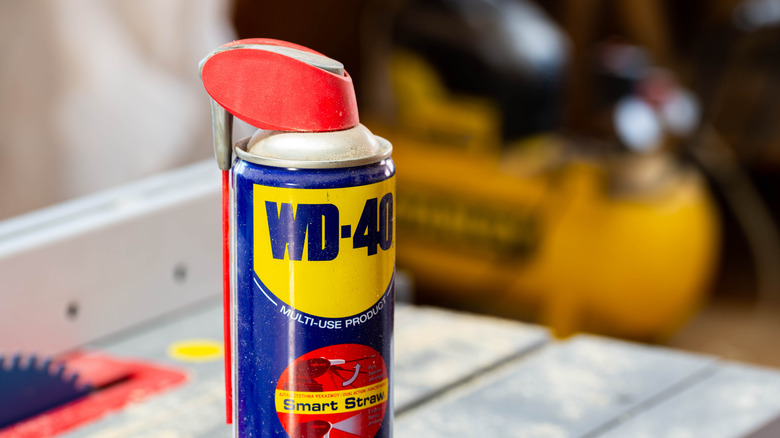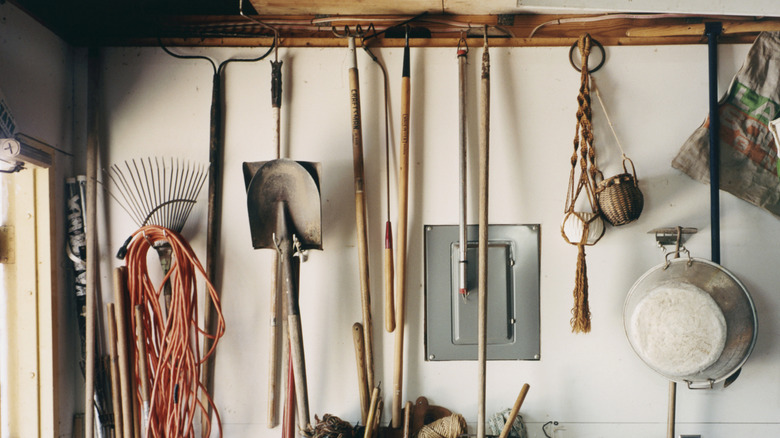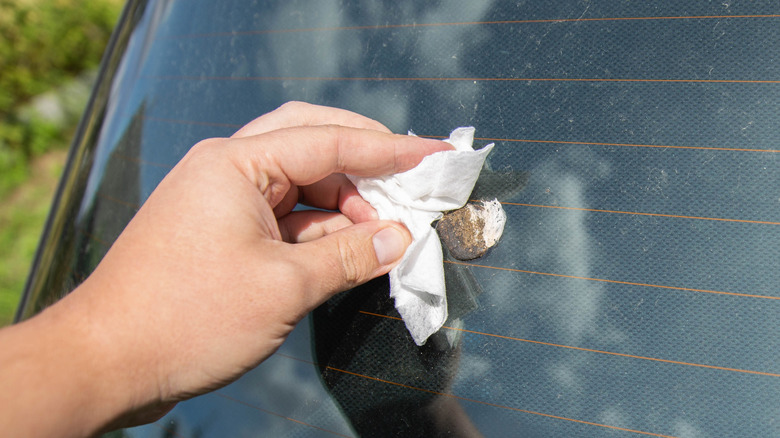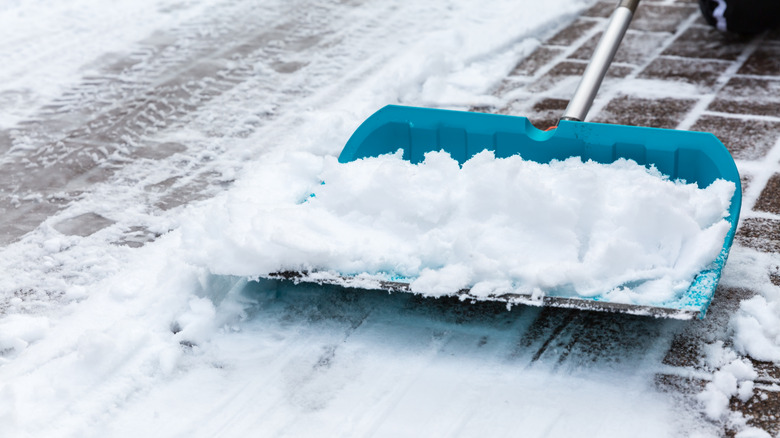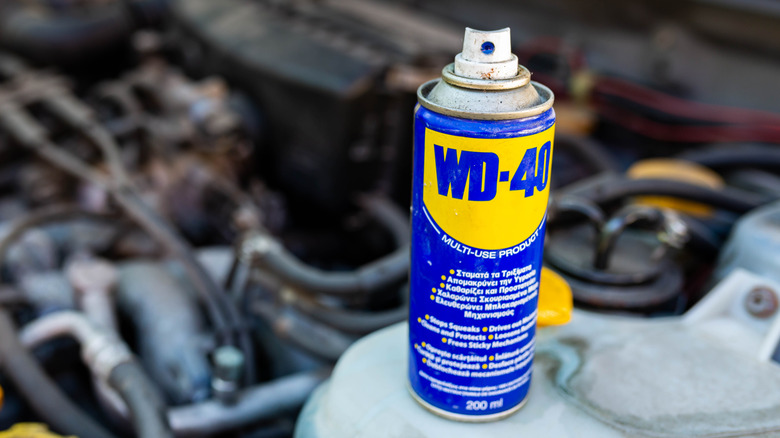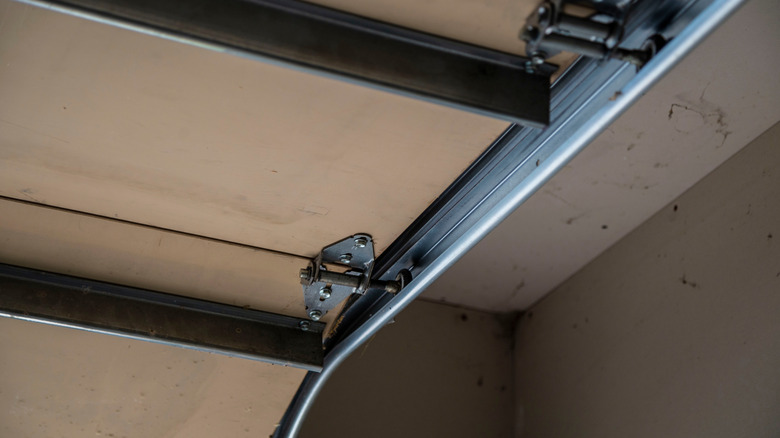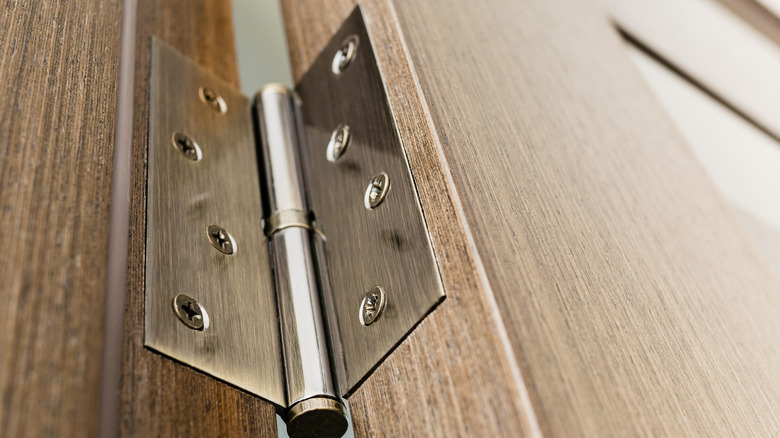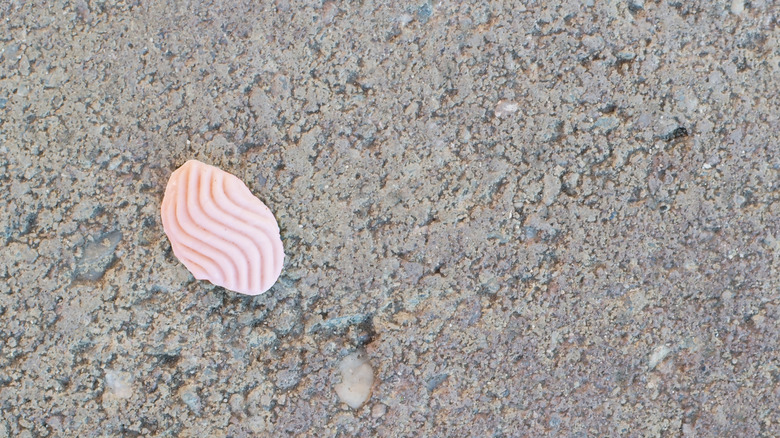7 Brilliant Ways You Should Be Using WD-40 In Your Garage
We may receive a commission on purchases made from links.
Chances are, you've got a can of WD-40 kicking around at home, waiting to be used on a rusty bike chain or a stuck valve. But did you know that the popular product has over 2,000 genius uses, many of which are far beyond the quick, mundane lubrication jobs? According to the manufacturer, this lubricant also keeps surfaces dirt-free, removes various types of caked-on grime, and even makes battling snow an easier task.
WD-40's diverse functionality stems from its unique composition. While the lubricant's formula remains a secret, we know that "WD" stands for water displacement. This refers to way the lubricant removes moisture from the object you apply it to before creating a protective barrier. This barrier reduces friction and keeps various substances from contacting the surface.
This makes the product ideal for cleaning and maintaining tools, equipment, and surfaces that are frequently exposed to soil, dust, and sticky residues. For example, the gardening tools you store in the garage could be that much easier to clean if you regularly treat them with WD-40. Likewise, the spray can help eradicate bird poop, tree sap, and insects stuck to your car's exterior, while showing similar prowess at lifting stickers, old adhesive, and gum from the garage floor. You can even use WD-40 to resuscitate your car's engine after it's been flooded with water. Below, we explain the science behind these brilliant WD-40 tips you can use in your home's garage.
Use WD-40 to keep dirt and leaves from sticking to your gardening tools
Your gardening tools are constantly exposed to soil, dirt, plant tissue, and various other debris. So, a thorough cleaning is usually a must when you bring them back to the garage after heavy use. But, instead of spending your precious time scrubbing various gunk off the tools, why not do something to prevent it from sticking to them in the first place?
By applying a coat of the WD-40 Multi-Use Product to your gardening shears, hoes, shovels, and other tools, you can make the after-use cleaning process much less painful. When you spray the coating onto an object, it creates surface tension and displaces moisture from its surface. And, if you apply it to gardening tools before you go out and use them, you'll cover the working parts (i.e. blades, cutting edges, sockets, and handles) with a thin layer of the lubricating agent. The WD-40 can even improve the function of pruning shears and other moving tools. Plus, any matter the tool comes in contact with will not stick to the surface, but rather to the coating that envelopes its exterior. When it's time to clean your tool, a simple wipe is all that's needed to remove any foliage or grime. Apart from speeding up your post-use cleanup, WD-40 can also remove rust from your gardening tools and keep it from forming as they await use in your garage.
Banish bird poop and sap from your car's exterior with WD-40
Do you keep your car inside the garage at all times? Few people do. Whether you're letting an overnight guest park in your indoor space, or you've created a home workshop in your garage for DIY projects, there are times when your car gets parked outside. At times like this, you're probably used to finding your car's exterior defaced with bird droppings, tree sap, and other gunk. Fortunately, the WD-40 Multi-Use Product can make quick work of this disgusting residue.
Since WD-40 hasn't published the exact list of ingredients in its composition, it's impossible to know which components penetrate through grime and loosen it enough to wipe off. That said, the manufacturer admits that 50% of its formula is comprised of solvents — namely, mineral spirits. Mineral spirits are made up of carbon atoms and hydrogen molecules (collectively known as hydrocarbons). This composition allows them to dissolve various substances — like the bird droppings or sap that's stuck to your car. To remove the debris and residue, give the area a liberal drenching with the Multi-Use Product, then simply wipe everything off with a cloth. And, if your vehicle's bumper has a caked-on layer of insects on it, you can follow the same procedure to remove those, too.
Use WD-40 to keep snow from sticking to your shovel
Shoveling snow is a physically-demanding and potentially dangerous affair — one that could literally land you in the hospital if you're not careful. According to the American Heart Association, clearing snow off your driveways or sidewalks exerts more stress on the heart than an actual stress test. Now, if you're not planning to swap the shovel for a snowblower, there is something you can do to reduce your physical exertion while shoveling — keep snow from sticking to the shovel with a lubricant like WD-40. Doing so doesn't necessarily eliminate your risk of becoming unwell. But with less weight on the blade, you'll be lifting as little as possible during the chore. Plus, you won't have to exert yourself more by hitting the shovel on the ground in hopes of dislodging the snow.
WD-40 is a water displacement agent that contains lubricants and penetrating agents in its composition. When you spray and clean the snow shovel with the WD-40 Multi-Use Product, it displaces any moisture on the blade, helps remove dirt, and bonds to its surface, forming a protective film. Then when you use the shovel, snow cannot get to the actual metal in the blade. Instead, it contacts the WD-40 coating, and the lubricants there allow it to slide right off. Again, if you have concerns about the health risks of shoveling snow, please don't rely on WD-40, or any other hack to keep yourself safe. Seek advice from a qualified medical professional instead.
Use WD-40 to fix a flooded car engine
This one's a long shot, because car engines that are flooded are often irreparable. However, if you're trying to salvage your vehicle after its engine has suffered water damage, WD-40 can help in a crucial part of the process — removing moisture. Being a powerful water-displacing agent, and having a tendency to creep upwards thanks to capillary action, WD-40 offers an effective way to dry out a flooded engine. Whether your car still works after depends on the extent of water damage it suffered. But hey, at least trying to save the vehicle is better than accepting it as a write-off.
Recovering a water-flooded car is a complicated task if you're not an auto-mechanic. However, generally the procedure involves taking out the battery, getting water out of the car's interior, and draining the engine. This is where the lubricant comes in. According to WD-40, you should spray a generous amount of it into the car's carburetor, and it will go to work forcing residual water and moisture out of the apparatus. To make sure this engine-draining strategy is suitable for your vehicle, be sure to consult with a professional mechanic first.
Free a stuck garage door with WD-40
A stuck garage door is a major nuisance that can throw an unexpected wrench into your plans. Unfortunately, garage doors can seize for a variety of reasons, which range from poor installation and track blockages to getting misaligned due to seismic activity. Many of these require a professional's help. However, rollers and tracks that are in need of rust removal and lubrication are a run-of-the-mill issue that you may be able to fix yourself. WD-40 contains solvents and anti-corrosion compounds that help remove rust from surfaces. It also contains lubricants that help the rollers move smoothly through the tracks. As a water displacement agent, it forms a protective film on the tracks, keeping moisture (and the subsequent rust issues) at bay.
If you've confirmed that the garage door isn't able to move properly because of rust or inadequate lubrication, the first step to freeing it is to get rid of rust. Spray the affected areas of the track with the WD-40 Multi-Use Product, then scrub the rust away with a brush. Next, lubricate all the moving parts with WD-40 Specialist White Lithium Grease. This step will help the rollers run up and down the tracks without sticking, all while protecting the entire mechanism from rust-causing moisture.
Make your garage entry door hinges squeak-free with WD-40
Can your entire household hear it when someone comes inside through the garage? A squeaky garage entry door can be caused by friction in the hinges. If there's not enough lubricant in the hinges, the knuckle and the pin will rub against each other as the door swings. This contact between the two parts produces the irritating sound. As long as they're not damaged due to wear, an easy way to fix your squeaky door hinges is to lubricate them with WD-40. Thanks to the lubricants in its composition, WD-40 can create a coating along the surfaces of the hinge parts, thus reducing friction and the intolerable noise.
Before you lubricate your squeaky door hinges with WD-40, raise the hinge pin if you can, and wipe off any grime with a tissue or cotton swab. Next, position the straw about an inch away from the hinge, and spray the entire mechanism from top to bottom. As you do so, make sure the lubricant gets in between the hinge knuckles. To avoid making a mess on the floor below, hold a paper towel beneath the hinge to catch any runoff lubricant. Repeat the same process for all the hinges, and the door should be ready for use. Note, however, that you will have to perform the procedure again when the lubricant dries and the hinges start making noise again.
Blast old adhesive, stickers, gum, and other residue from garage surfaces with WD-40
Your garage is a magnet for various spills, stains, and stubborn residue. Even if you only use it to park your car, there's a chance that at some point, there will be an oil spill on its floor. Working on projects and letting kids play in the garage invites even more gooey things (think glue and gum) to leave their marks on surfaces. When you finally get around to it, cleaning all this gunk off may seem like a chore. But worry not, with a can of WD-40 and a brush, these stains can become a thing of the past. That's because WD-40 is specifically formulated to penetrate grime. The mineral oil solvents in its formula attack the pesky residue on a molecular level and loosen its bond with the surface it's stuck to. This way, getting rid of sticker residue, gum, or old adhesive by scrubbing with a brush becomes easy enough.
Begin by scraping as much of the gunk as possible from the surface, and remove any large bits that come loose. Next, spray the entire area thoroughly with the WD-40 Multi-Use Product and let the liquid do its work on the gunk for several minutes. During this time, WD-40 will destroy the bonds in the residue and make it softer. Finally, wipe the treated area with a cloth, being sure to lift both the dislodged goo and any remaining lubricant off the surface.
